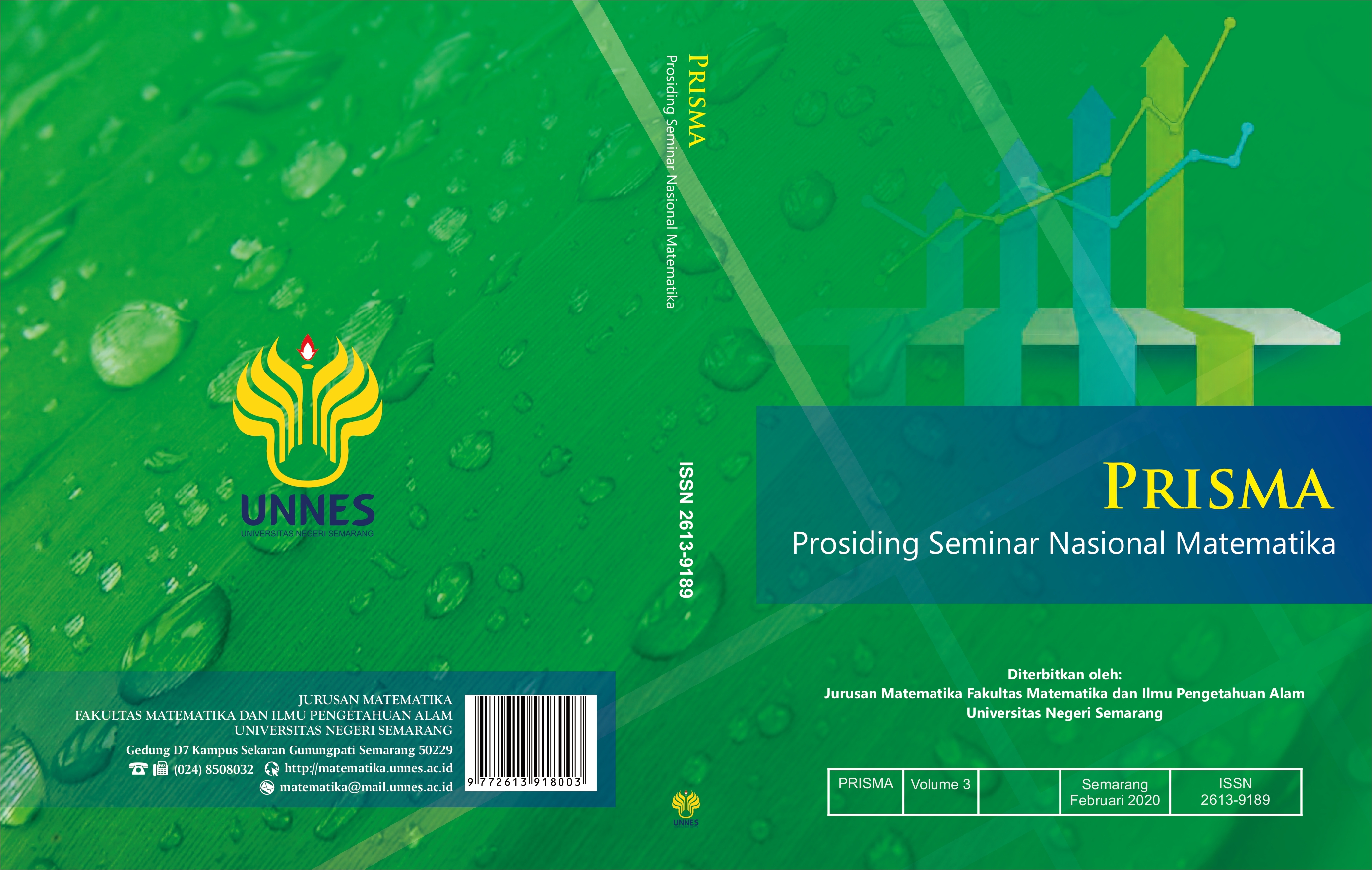Kemampuan Berpikir Kreatif Matematis pada Tiap Gaya berpikir Gregorc
Main Article Content
Abstract
Rendahnya pemahaman terhadap karakteristik siswa menjadi salah satu faktor penyebab penurunan kualitas pembelajaran. Oleh itu guru diharapkan mampu mengidentifikasi berbagai karakteristik siswa dalam pembelajaran sehingga dapat mengembangkan kemampuan berpikir kreatif matematis. Oleh karena itu artikel ini bertujuan untuk menjelaskan teori kemampuan berpikir kreatif matematis dan gaya berpikir Gregorc sehingga dapat diperoleh hubungan antara kedua teori tersebut. Metode penelitian yang digunakan adalah studi literature tentang kemampuan berpikir kreatif matematis dan gaya berpikir Gregorc. Berpikir kreatif matematis di tingkatan sekolah tidak mengharapkan karya yang luar biasa melainkan mampu menawarkan wawasan baru dalam penyelesaian permasalahan matematika dengan berlandaskan aspek kelancaran, fleksibilitas, elaborasi, dan originalitas. Gaya berpikir menjadi salah satu faktor perbedaan tingkatan berpikir kreatif. Gaya berpikir Gregorc terdiri atas Sekuensial Konkret (SK), Acak Konkret (AK), Sekuensial Abstrak (SA), dan Acak Abstrak (AA). Ciri SK antara lain: akurat, stabil, dan terorganisasi. Ciri SA adalah analitis, objektif, teliti, logis, dan sitematis. Ciri AK yaitu: sensitif, imajinatif, spontan, dan fleksibel. Ciri AA antara lain: intuitif, realistis, inovatif, dan mengikuti naluri. Berdasarkan Ciri gaya berpikir maka siswa dengan gaya berpikir AK dan AA dianggap memiliki aspek berpikir kreatif matematis.
Article Details
References
Ayllón, M. F., Gomez, I. A., & Ballesta-Claver, J. (2016). Mathematical Thinking and Creativity through Mathematical Problem Posing and Solving. Journal of Educational Psychology-Propósitos y Representaciones, 4(1), 195-218.
Bart, W. M., Hokanson, B., Sahin, I., & Abdelsamea, M. A. (2015). An investigation of the gender differences in creative thinking abilities among 8th and 11th grade students. Thinking Skills and Creativity, 17, 17-24.
Chamberlin, S.A., & Moon, S.M. (2005). Model-elicting Activities as a Tool to Develop ad Identify Creatively Gifted Mathematicians. Journal of Secondary Gifted Education, 17(1), 37-47.
DePorter, B., dan Hernacki, M., diterjemahkan oleh Abdurrahman, A., (2009). Quantum Learning: Membiasakan Belajar Nyaman dan Menyenangkan. Bandung: KAIFA.
Ervynck, G. (2002). Mathematical creativity. In Advanced mathematical thinking (pp. 42-53). Springer, Dordrecht.
Ginnis, P. (2008). Trik dan taktik mengajar. Jakarta: Indeks.
Gregorc, A. F. (1998). The Mind styles model: Theory, principles and practice: a primer. Gregorc Associates.
Haylock, D. (1997). Recognising mathematical creativity in schoolchildren. ZDM, 29(3), 68-74.
Kassim, H. (2013). The relationship between learning styles, creative thinking performance and multimedia learning materials. Procedia-Social and Behavioral Sciences, 97, 229-237.
Liljedahl, P., & Sriraman, B. (2006). Musings on Mathematical Creativity. For the Learning of Mathematics, 26(1), 17-19.
Maulidia, F., Johar, R., & Andariah, A. (2017). Students’ Creativity in Solving Mathematical Problems through Problem Based Learning. Proceedings of AICS-Social Sciences, 7, 716.
Nadjafikhah, M., & Yaftian, N. (2013). The frontage of creativity and mathematical Creativity. Procedia-Social and Behavioral Sciences, 90, 344-350.
Naja, A. R. (2018) Analysis of students’ creative thinking level in problem solving based on national council of teachers of mathematics. In Journal of Physics: Conference Series (Vol. 1008, No. 1, p. 012065). IOP Publishing.
Pehnoken, E. (1997). The State-of-art in Mathematical Creativity. ZDM, 29(3), 63-67.
Runco, M.A., & Acar, S. (2012). Divergent Thinking as an Indicator of Creative Potential. Creativity Research Journal, 24(1), 66-75.
Scott, G., Leritz, L.E., & Mumford, M.D. (2004). The Effectiveness of Crreativity Training: A Quantitative Review. Creativity Research Journal, 16(4), 361-388.
Shriki, A. (2010). Working like real mathematicians: Developing prospective teachers’ awareness of mathematical creativity through generating new concepts. Educational Studies in Mathematics, 73(2), 159-179.
Silver, E. A. (1997). Fostering creativity through instruction rich in mathematical problem solving and problem posing. Zdm, 29(3), 75-80.
Siswono, T. Y. E. (2010). Leveling Students'creative Thinking in Solving and Posing Mathematical Problem. Journal on Mathematics Education, 1(1), 17-40.
Sriraman, B. (2009). The characteristics of mathematical creativity. ZDM, 41(1-2), 13.
Å vecová, Valéria, Lucia Rumanova, and Gabriela PavloviÄová. "Support of pupil's creative thinking in mathematical education." Procedia-Social and Behavioral Sciences 116 (2014): 1715-1719.
Tobias, C. U., & Kwee, H. T. Y. (2000). Cara mereka belajar. Harvest Publication House.
Tsai, K. C., & Shirley, M. (2013). Exploratory examination of relationships between learning styles and creative thinking in math students. International Journal of Academic Research in Business and Social Sciences, 3(8), 506.
Uno, H. B. (2006). Orientasi Baru dalam Psikologi Pembelajaran. Jakarta: Bumi Aksara
